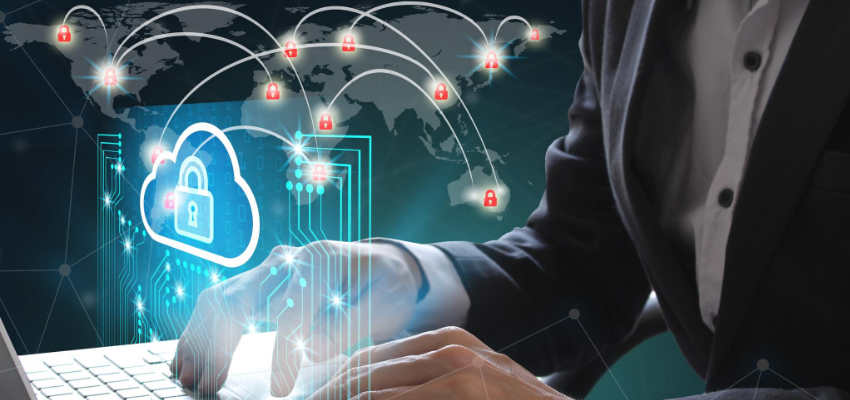Show:
Evolving Risks: Staying Ahead With Continuous Network Monitoring
With cyber threats continually on the rise, network security can feel like an endless game of whack-a-mole. Just as you get a handle on one vulnerability, two more pop up in its place. Fragmented visibility leaves dangerous blind spots where attackers can gain a foothold before anyone notices. By the time a breach gets detected, the damage is often already done. As per statistics, the average data breach costs as of 2023 are about USD$ 9.48 million. It’s clear that traditional periodic scanning isn’t sufficient to counter the threats of today.

Thus, the key here is shifting to a more proactive security stance through continuous network monitoring. Continuous monitoring exposes suspicious activities in real time so you can respond immediately before major damage occurs.
To help you understand, this article explores the critical capabilities continuous monitoring provides for prioritizing threats. You’ll also be able to learn more about recommended tools and strategies for developing a mature monitoring program.
Gain greater network visibility
One of the most valuable benefits continuous monitoring provides is highlighting those murky network blind spots where threats can hide unnoticed. This can be massively helpful, especially since many traditional security tools have major visibility gaps. For example, endpoints may run antivirus software yet lack visibility into broader network activities that could reveal risks.
Continuous monitoring through network vulnerability assessment weaves together telemetry from these disconnected sources to erase blind spots across the environment. With comprehensive visibility, you gain full insight into inbound and outbound traffic, service communications, user behaviors, and more. You can also proactively hunt for risks based on changes in traffic patterns, unauthorized application usage, suspicious insider actions, and other red flags.
But remember, gaining visibility is just the first step. The monitoring data must fuel decisive action to contain emerging attacks. Comprehensive visibility paired with automated alerting gives your security team a huge leg up on today’s sophisticated threats.
Automate monitoring and alerts
In today’s dynamic threats, ever-expanding networks, and overwhelming volume of data, manual monitoring simply isn’t practical anymore. Thus, it’s best to rely on automation to do the heavy lifting. Leverage artificial intelligence (AI) and advanced analytics that can baseline normal behavior across users, systems, and applications. Configurable rules can detect known bad actors, while machine learning spots anomalies that could indicate emerging threats.
Automated alerting is also critical so your security team can focus on the most credible events. Tuning the alerting threshold should be a balancing act—too much noise leads to alert fatigue, but you also don’t want to miss true red flags.
For instance, malware attacks are often the most dangerous yet most common cyberattacks that occur to many businesses, with about 5.5 billion malware attacks recorded worldwide in just a single year. So, start by alerting on high confidence threats like detected malware execution or unauthorized lateral movement. Then, fine-tune the correlation rules and models to cut down false positives and highlight legitimate risks.
Set up playbooks to automatically respond to common threats like isolating compromised hosts. The more you can automate, the faster security teams can hunt down and neutralize the most sophisticated threats. Just be sure to keep a human in the loop before taking disruptive actions like shutting down systems or blocking users. The goal here is automation with accountability.
Understand normal behavior
To spot anomalies that could indicate threats, continuous monitoring relies on deep knowledge of normal behavior across users, systems, and the entire environment. That means establishing baselines for network traffic patterns, bandwidth usage, user activities, connection requests, and more.
This isn’t a quick process, as it takes time to gather data and understand usual rhythms and variations. The more historical data, the more accurate the baseline. Baselining illuminates the real red flags, like spikes in data transfers after hours, unfamiliar applications contacting servers, or employees accessing abnormal amounts of sensitive data.
Furthermore, as the environment evolves, updating baselines periodically is also necessary. Remember, what’s normal today may not be normal tomorrow. A strong understanding of ordinary activity is foundational to continuous monitoring. It transforms raw data into highly contextual security insights your team can act on.

Gain context for prioritizing threats
Sometimes, the sheer volume of alerts generated can overwhelm security teams, sending them on wild goose chases after false positives. That’s why having context is important to help separate harmless alerts from serious security threats that require urgent response.
Think about it this way—if your credit card company called about a suspicious USD$10 charge, you may not be too concerned. But if they said a suspicious USD$10,000 charge just happened, you’ll likely drop everything to address it!
The same logic goes for network threats. A single odd behavior may not raise eyebrows on its own. But multiple correlated events together paint a different picture. Seeing the whole field instead of just isolated cases reveals which threats to prioritize. For example, a random server getting hit with some scans isn’t too unusual. But if that server also shows encrypted outbound traffic and policy violations, it’s a red alert.
Overall, having context transforms raw data into an effective compass pointing security teams to the most dangerous threats. Instead of drowning in a sea of alerts, they can dive directly and protect what matters most.
Continuously fine-tune defenses
The insights from continuous monitoring are like getting a check-up from your doctor—it highlights areas you can improve for your health and well-being.
Monitoring data acts like a free security coach. It’s about pointing out vulnerabilities in your defenses and showing the weak spots that cyber threats can possibly exploit to break into your network.
Through active and continuous network monitoring, you can find the cracks in your network’s armor and make the necessary fixes before those cracks turn into full-on breaches. You don’t have to overhaul everything at once. The key is to regularly review the monitoring data and make incremental improvements. You can consider this as preventative care for your network environment. This constant tuning enables defenses to evolve and mature over time.
Monitoring tools and safety
Picking the right monitoring tool is essential, but effective implementation is even more important. Thus, make sure monitoring capabilities span the full environment—network perimeter, endpoints, servers, clouds, etc. The tools should feed data into a central system to connect the dots between threat events.
Having a smart monitoring strategy is also equally important. So, consider which assets and systems are most critical to monitor. Specify the threats that worry you the most, your must-have use cases, and how analysts will consume the data operationally. This strategic groundwork ensures you pick the right tools and deploy them effectively.
And lastly, it’s crucial to keep fine-tuning the monitoring approach over time. As your tech stack changes, are new blind spots being introduced? Do analysts have the visibility they need during incidents? Continue to adapt tools and strategies to your evolving environment and objectives for maximum security benefit.
The bottom line
Continuous network monitoring provides vital capabilities to counter evolving cyber risks. Thus, if you want your company’s network security teams to stay ahead of the threats, continuous monitoring is essential. Taking this approach lays a secure foundation for promptly identifying and preventing new attacks from stealing your company’s valuable assets.

 Return to Previous Page
Return to Previous Page








